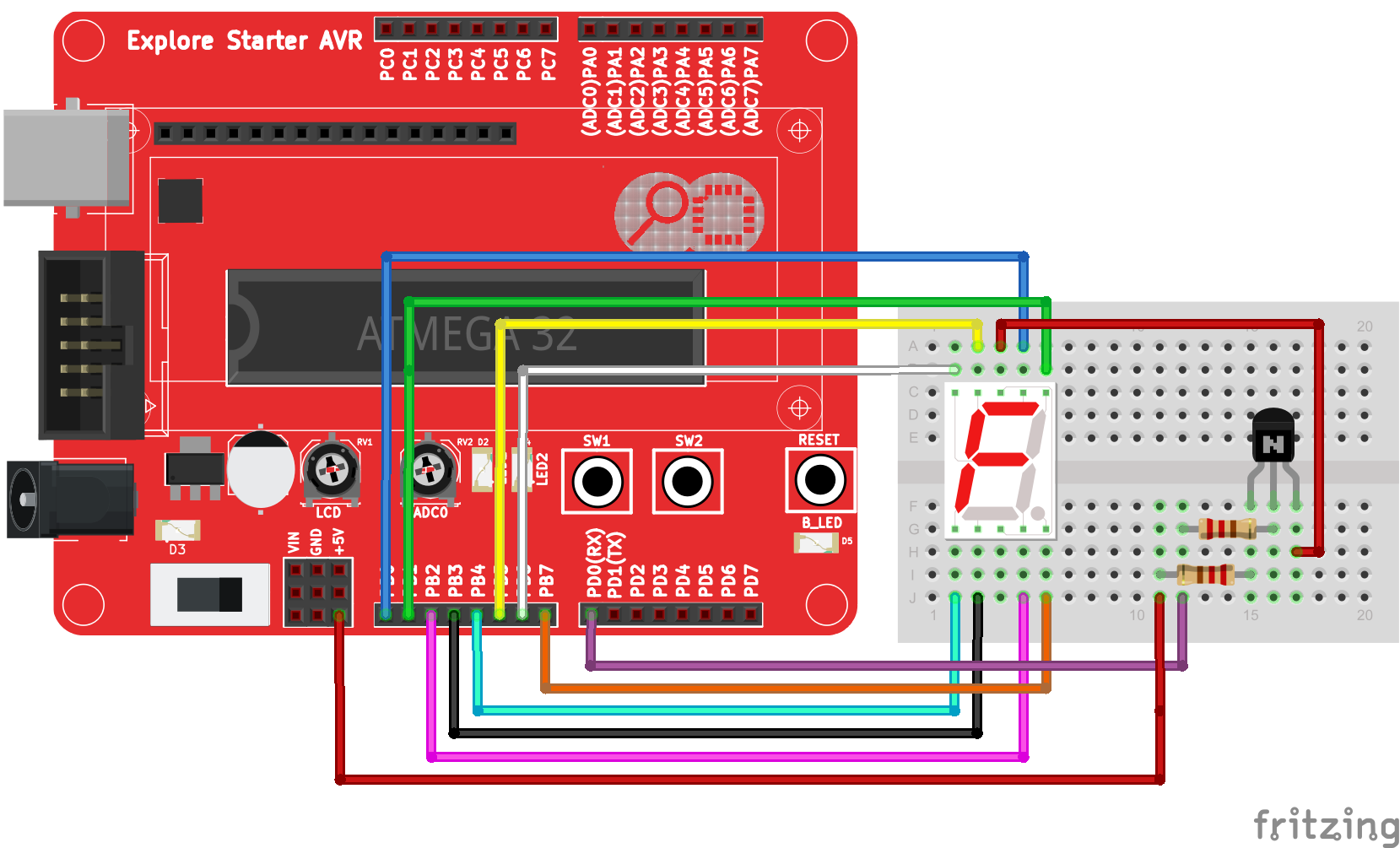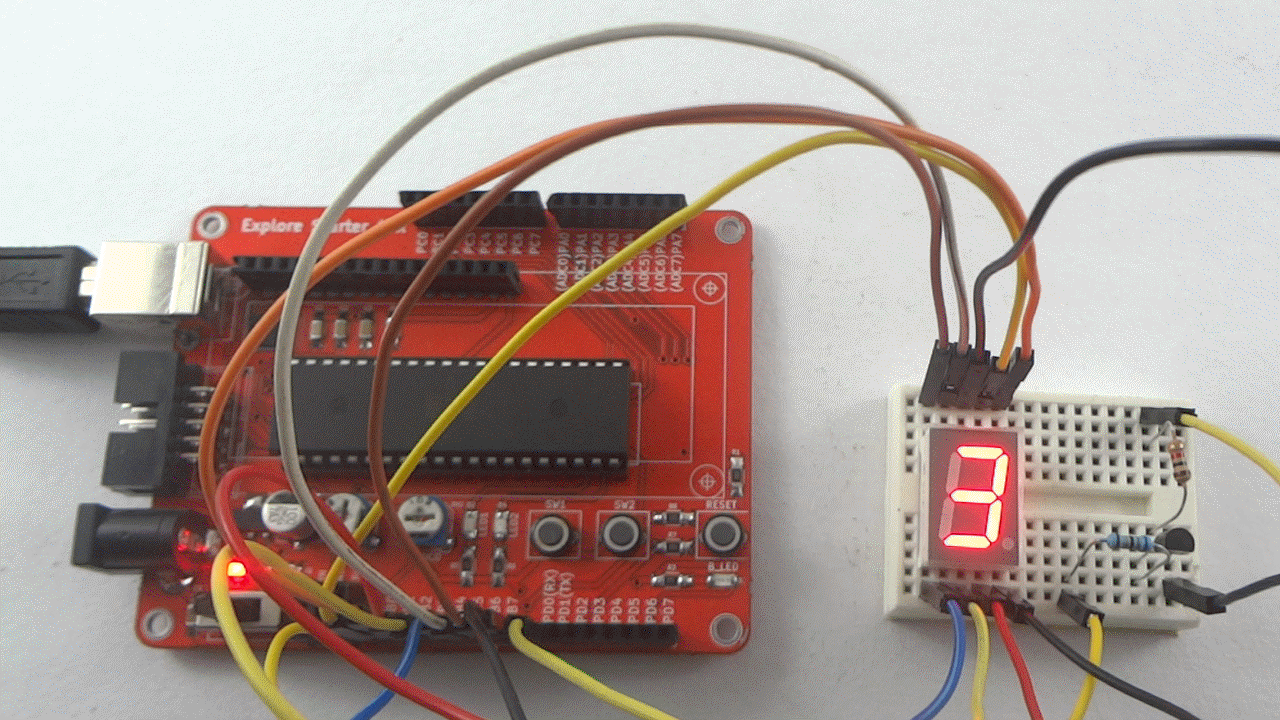Difference between revisions of "Interfacing Seven Segment Display with Starter AVR"
| Line 2: | Line 2: | ||
Now we will go further and will interface more complex peripherals. In this tutorial we will interface common anode 7 segment display to the starter AVR board. To get idea about basics of 7 segment display check out our [[Interfacing Seven Segment Displays with AVR]] tutorial. | Now we will go further and will interface more complex peripherals. In this tutorial we will interface common anode 7 segment display to the starter AVR board. To get idea about basics of 7 segment display check out our [[Interfacing Seven Segment Displays with AVR]] tutorial. | ||
=Basic= | =Basic= | ||
| + | In this example we are using common anode type of 7 segment display. To give positive voltage to the common anode I am using BC547, N-Type transistor as a driver and PD0 is used to drive this driver. Data lines of display is connected to PORTB. Do the connection as shown in hookup and flash the code. | ||
| + | |||
=Hookup= | =Hookup= | ||
[[file:7Segment_Starter_AVR1.png]] | [[file:7Segment_Starter_AVR1.png]] | ||
Revision as of 17:35, 5 April 2016
Now we will go further and will interface more complex peripherals. In this tutorial we will interface common anode 7 segment display to the starter AVR board. To get idea about basics of 7 segment display check out our Interfacing Seven Segment Displays with AVR tutorial.
Contents
Basic
In this example we are using common anode type of 7 segment display. To give positive voltage to the common anode I am using BC547, N-Type transistor as a driver and PD0 is used to drive this driver. Data lines of display is connected to PORTB. Do the connection as shown in hookup and flash the code.
Hookup
Code


